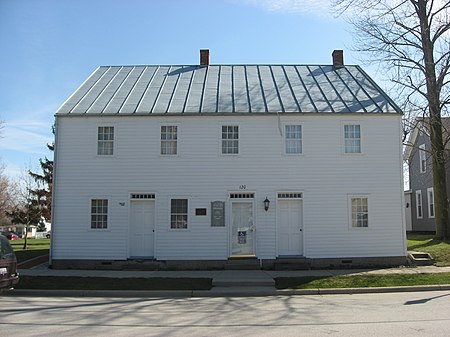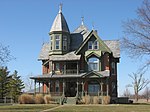New Bremen, Ohio
1833 establishments in OhioGerman-American culture in OhioGerman-American historyPopulated places established in 1833Use mdy dates from July 2023 ... and 2 more
Villages in Auglaize County, OhioVillages in Ohio

New Bremen ( BREE-mən) is a village in Auglaize County, Ohio, United States. The population was 3,034 at the 2020 census. It is included in the Wapakoneta, Ohio Micropolitan Statistical Area. The village is adjacent to Minster to the south. The village was founded by German immigrants in 1833 and is named after Bremen. It is home to the Bicycle Museum of America. New Bremen is also the world headquarters of Crown Equipment Corporation.
Excerpt from the Wikipedia article New Bremen, Ohio (License: CC BY-SA 3.0, Authors, Images).New Bremen, Ohio
East Monroe Street,
Geographical coordinates (GPS) Address Nearby Places Show on map
Geographical coordinates (GPS)
| Latitude | Longitude |
|---|---|
| N 40.436388888889 ° | E -84.379444444444 ° |
Address
East Monroe Street 116
45869
Ohio, United States
Open on Google Maps






